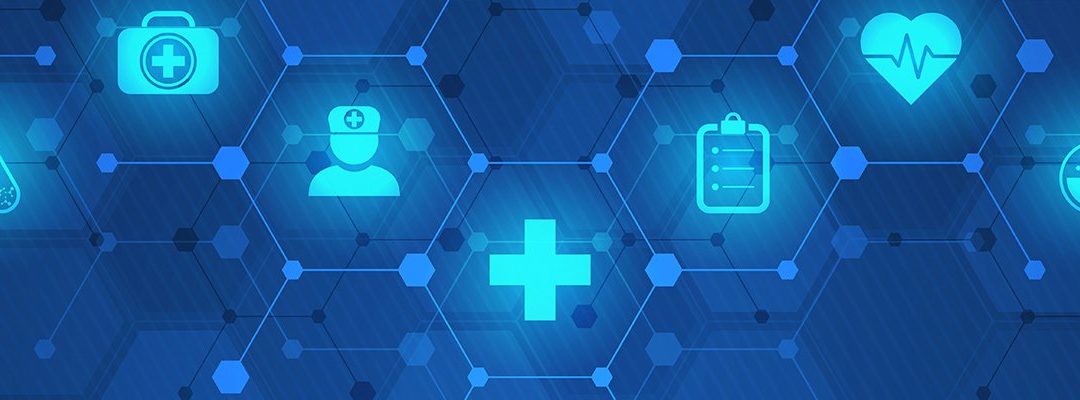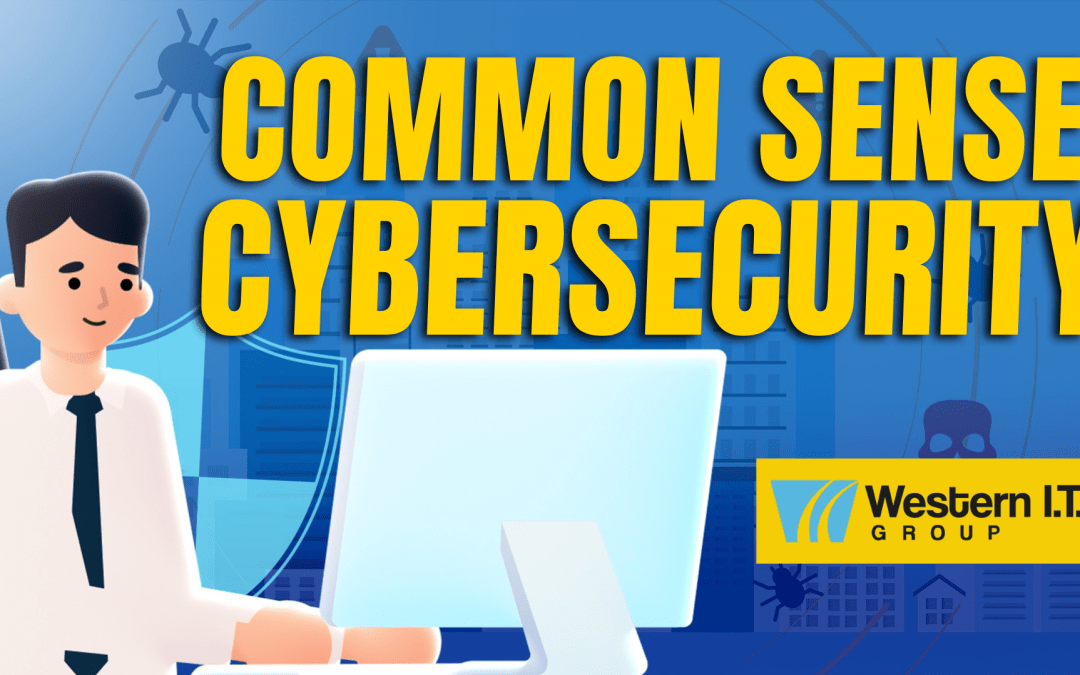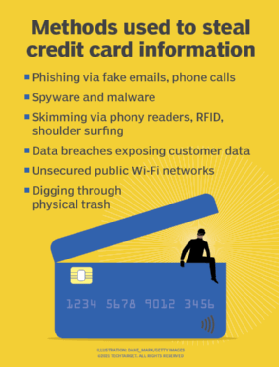Understand the Holiday Season Cyber Threats The holiday season is a time for joy, celebration, and generosity. However, this...


Understand the Holiday Season Cyber Threats The holiday season is a time for joy, celebration, and generosity. However, this...

This in-depth cybersecurity planning guide provides information and advice to help organizations develop a successful strategy...

While home health agencies face distinct health IT challenges, collaboration and innovation are crucial for overcoming these...

The umbrella term malware is one of the greatest cybersecurity threats enterprises face. Learn about 12 common types of malware...

Originally Published on TechTarget.com by Sharon Shea, Executive Editor and Alexander S. Gillis, Technical Writer and Editor...

By: Andres Phillips First Published: 05 Jul 2024 on TechTarget
Given the exponential growth of e-commerce and online transactions, cybersecurity has never been more critical. Hackers may attempt to invade our privacy in several ways, but one area they find particularly enticing is credit card information. Stolen credit cards can negatively impact not just your finances, but your personal identity and privacy as well. Effectively protecting them and the data connected to them is essential in the online world.
In this article, we delve into how cybercriminals can steal your credit card information, highlight best practices that can keep you safe and explain what to do if your credit or debit card is compromised.
Hackers can steal credit and debit card information in a variety of ways, using both online and offline methods.
Can a website steal your credit card info? The short answer is yes.
With phishing, hackers attempt to steal valuable information by impersonating a trusted source. There are several different forms of phishing schemes, including the use of fake phone calls, websites and sales emails.
For example, someone pretending to be from your issuing bank or credit card company calls and says they need to verify your recent credit card activity with some personal information and starts off by asking for your credit card number. Similarly, a phishing email sent by an attacker posing as a retailer that offers you a discount or free items could be trying to trick you into giving up payment card account details.
This article is part of
How to prevent: The best way to prevent phishing scams — whether via email, phone or text — is to never give up any personal or credit card information unless you initiated the contact. Also, go directly to a retailer’s website to conduct business to ensure you control all transactions.
Be careful what you download. Accidentally downloading malware or spyware can enable hackers to access information stored on your computer, including credit card information and other details. For example, a malware attack might use a keylogger that records your keystrokes or browser history and then sends that information to a hacker.
How to prevent: Avoid downloading attachments, unless they come from a trusted source, and be wary of the programs you download and install on any of your devices. Also, use antivirus software that catches malware before it infects your computer.
Credit card skimming is a popular offline method used by criminals to steal personal information at a point of sale, which can also lead to identity theft. The following are three forms of skimming to be aware of.
How to prevent: Inspect outdoor credit card readers for signs they may have been tampered with before using them.
How to prevent: Make sure your financial institution has adequate safeguards in place, including encryption.
How to prevent: Shield keypads with paperwork, your body or by cupping your hand.

Unfortunately, high-profile data breaches — the ones we hear about — have become fairly common in recent years. And with the amount of data stored online, it represents another avenue for hackers to steal credit card, financial and other kinds of personal information. According to Verizon’s “2023 Data Breach Investigations Report,” personal data was taken in more than 50% of 5,010 confirmed breaches that occurred from November 2021 through October 2022. Attackers made off with payment data in about 5% of the breaches, the report said.
How to prevent: One way to mitigate the possibility of becoming a victim of a data breach is to use a virtual credit card that enables you to check out at e-commerce stores without including your credit card information. If you become a victim, steps you should take include freezing your credit, placing a fraud alert on it and replacing the card affected by the breach. Also, obtain a copy of your credit report and be extra vigilant of suspicious credit card activity.
Unsecured public Wi-Fi networks carry some danger if you enter sensitive information when connected to them. While airport or hotel Wi-Fi can be convenient, precautions should be taken to protect against losing credit card data and other sensitive information. Furthermore, should a “Free Public Wi-Fi” entry show up on your device, it might actually be a hacker on a nearby smartphone or laptop attempting to get unsuspecting users to sign on in order to steal their personal information.
How to prevent: Don’t conduct sensitive business while connected to public networks. If you need to access these networks, use a VPN. Otherwise, stick to trusted and authenticated access points and service set identifiers or use your wireless cellular data connection.
While it may seem old-fashioned, criminals can dig through your garbage to find credit card statements, account information and more that they can use to their advantage.
How to prevent: Opt to receive credit card statements via email. If you do receive paper statements in any form, shred them after you no longer need them.
Cybercriminals can choose from an assortment of methods to get your credit card. Here are some tips to prevent that from happening.
Credit monitoring and identity security services such as LifeLock keep you up to date on your credit card activity. They can also help get you ahead of any fraudulent activity faster than if you were manually checking your statements.
Checking credit statements manually and monitoring Equifax, Experian or TransUnion for purchases you don’t remember making can alert you to strange transactions and suspicious activity.
Alerts from your bank via text, push notifications and/or email can help you identify suspicious transactions soon after they’ve happened.
If you’re connecting to any public networks, it’s helpful to use a VPN to protect yourself from malware and hackers. Not to mention, antivirus software can protect you if you accidentally download harmful malware.
When visiting any website, but especially when conducting online transactions, ensure the URL includes https:// and is secure.
It can be tempting to save your credit card information on Google or at e-commerce sites you frequent. However, you should consider avoiding this practice, as it potentially provides hackers with access to your personal information in the case of a data breach.
Another way to avoid being the victim after a data breach is to use strong passwords that contain a mix of letters, numbers and symbols. In addition, multifactor authentication can provide an added layer of security to protect you. Consider using it when offered. The same goes for newer passwordless authentication methods based on biometrics or the FIDO protocols.
Finally, avoid writing your credit card number, PIN, expiration data, etc., anywhere or posting pictures of your credit card number online.
Following the best practices in this article will help keep your credit card information away from danger. Nothing is foolproof, however, and you need to take action if your information is stolen.
Here’s what you should do.
Calling your bank or credit card company is the first step you should take if you suspect your card has been stolen or compromised. This can prevent any further damage from occurring and help you avoid liability for fraudulent purchases. Your credit card issuer will cancel your card and issue a new one.
Between data breaches, malware and public Wi-Fi networks, hackers can use several online methods to steal your credit card and personal information. Updating your passwords on any websites you regularly visit can prevent them from gaining access to this data.
Even after you cancel your compromised credit card and get a new one, some fraudulent transactions you’re not immediately aware of could show up on your statements. Continue to monitor them so you can dispute any transactions that look suspicious.
Credit cards are a common target for cybercriminals, and that’s not going to change anytime soon, if ever. Being aware of the methods they use to steal personal information — credit card data, in particular, but also other details that can lead to fraudulent transactions, identity theft and more — is the first step toward protecting yourself. Implement the best practices in this article to keep your credit card information safe and take a more active role in preventing yourself from becoming a victim of fraud.
Unrivalled Cybersecurity Service. In a digital era brimming with cyber threats, ensuring the security of your business is paramount. Western I.T. introduces WIT Protect, a comprehensive cybersecurity package that stands as a stalwart shield against the ever-evolving landscape of viruses and malware.
Cybersecurity refers to the practice of protecting systems, networks, and data from digital attacks. It involves implementing measures to guard against unauthorized access, data breaches, and cyber threats like malware, ransomware, and phishing. Effective cybersecurity ensures the integrity, confidentiality, and availability of information, safeguarding businesses and individuals from financial loss, reputational damage, and operational disruptions. With the increasing reliance on digital technology, robust cybersecurity practices are essential for maintaining a secure digital environment.
Worried about being a target for phishing attacks? Protect your company today!
Understand the Holiday Season Cyber Threats The holiday season is a time for joy, celebration, and generosity....
This in-depth cybersecurity planning guide provides information and advice to help organizations develop a successful...